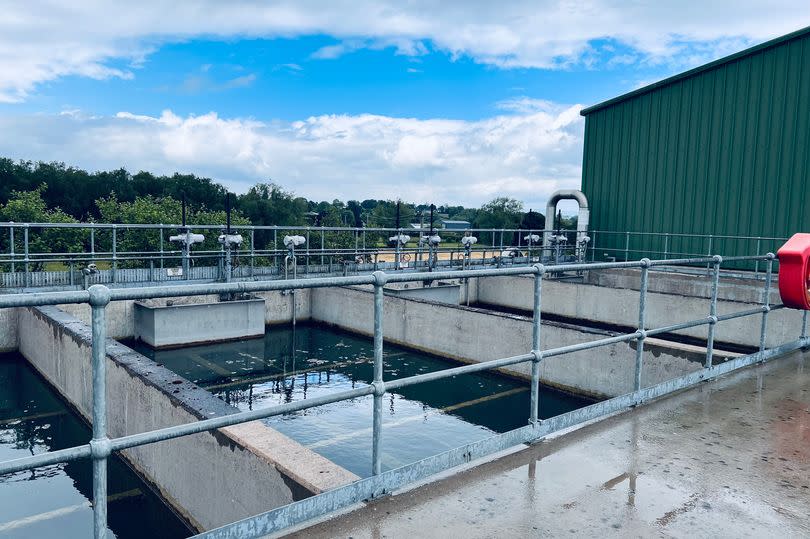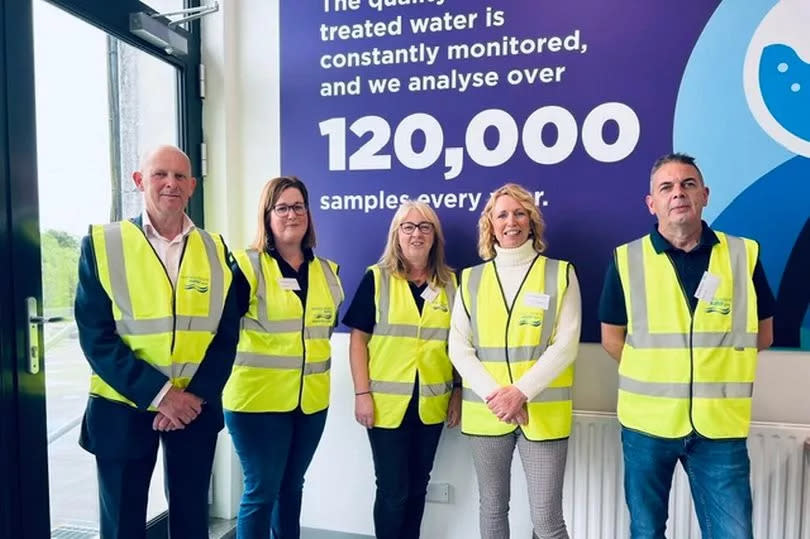Lough Neagh drinking water plant - a behind the scenes look as algae blooms again
Over 40% of the water that comes out of Northern Ireland taps comes from Lough Neagh. But in Belfast that figure is as high as 50% of the city's supply.
At the height of the blue-green algae bloom last year, NI Water say this led to a rise in complaints about the taste, smell and appearance of tap water amid concerns about the toxin.
While staff told us they did see supplies taken from the lough come in green when blue-green algae was blooming, NI Water assured us that after the water abstracted from Lough Neagh went through all of their treatment processes it was safe to drink.
READ MORE: 18m tonnes of 'raw sewage' spill into NI waters a year
READ MORE: Lough Neagh fish 'safe to eat' after blue-green algae says Food Standards Agency
With concerns again rising about the growing bloom of green-blue algae, we got a peek behind the scenes of a water treatment plant on Lough Neagh's shores to see how the NI Water team and their scientists make sure they are delivering safe water to our taps.
Head of drinking water regulation, Dymphna Gallagher, told us: "We monitor drinking water supplies constantly throughout the year - 365 days a year. There's 120,000 samples lifted and it's really important this year that if people do get taste and odour they look at NI Water's website and understand where the samples have been lifted... they will be able to see that and maybe understand they don't need another sample lifted."

NI Water's Moyola treatment works abstracts water from Lough Neagh through an intake pipe about 1.5km from shore and pumps it 1km over land into tanks to start the treatment process. Small particles are screened out and the water is filled with air bubbles to draw any "dirt" to the top.
Staff at the plant told us the water can look sandy or peaty and at the height of last year's algae bloom was green, but then they "adjust the PH to help it coagulate the particles" in the water.
Ms Gallagher added: "The coagulation draws the algae together, floats it up and takes it away."
Then any "dirt" on the top of the water is drained off before it's pumped to filtration tanks to take out more particulate matter. From there, site manager Malachy Casey, told us: "It's basically gravity filtration with a layer gravel at the bottom and your collection manifold, your sand and then an anthracite cap. We've got to remove everything before we disinfect it.
Malachy says a number of chemicals are used to treat the water including aluminium sulphate, phosphoric acid (to reduce lead leeching) and chlorine. The water clarity and PH is then checked before being distributed to people's homes. As well as testing for cyanotoxins, NI Water scientists also test for another harmful bacteria called cryptosporidium.

Ms Gallagher said: "It can be found in sheep gut and therefore can be in your catchment areas, so it's just an example of one more thing we need to treat through multibarrier treatments to make sure the final water is clean and doesn't have any in it.
"Northern Ireland Water constantly look to keep improving and making sure we are providing good customer service and we have really good quality drinking but we constantly want to invest to make sure that still happens."
Northern Ireland Water has been historically under funded and was not provided the capital budget it needs to make upgrades to its system again this year. A spokesperson told us: "NI Water’s Business Plan (PC21) identified the need to invest £2.7bn to begin addressing historic underinvestment.
"In Belfast alone, £1bn is required to tackle wastewater, flooding and drainage problems identified by the Living with Water Programme. A fully funded PC21 would only begin to solve the problem of development constraints across the country; an underfunded PC21 will make development constraints considerably worse and will take several Price Control periods to rectify.
"NI Water's capital budget allocation for 2024/25 is c£146m less than the Utility Regulator's final determination. Going forward DfI have advised NI Water to plan on the basis that NI Water will get approx. £321m per annum, which whilst a substantial investment, cannot meet the PC21 obligations. NI Water is working with water regulators to ensure the investment available is prioritised.
"NI Water has a plan in place and is ready to deliver. However, recent budget reductions have severely restricted progress with the main key projects unable to proceed. NI Water must continue to protect the provision of clean safe drinking water, so these reductions will most likely mean work planned to improve our wastewater system will not proceed. We will continue to work with developers, the environmental regulator and DfI to ensure we maximise the potential of the investment that has been made available, whilst continuing to protect the environment."
If you have any concerns about water in your area, you can report them to NI Water and even see updates on Lough Neagh or any water supply issues on their interactive website.
For all the latest news, visit the Belfast Live homepage here and sign up to our What's On newsletter

 Yahoo News
Yahoo News 
